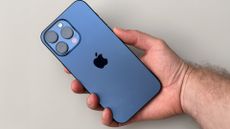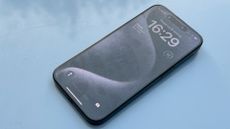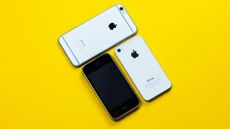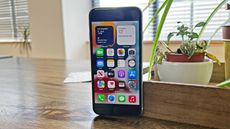When Apple ditched 3D Touch from the iPhone XR last year, it was widely seen as nothing more than a reflection of how tough incorporating the pressure-sensitive technology into an edge-to-edge LCD panel was. However, the decision may have been a harbinger for things to come, according to a new report.
For those who don't know, 3D Touch is the marketing-lingo used by Apple to refer to the ability to trigger different actions throughout iOS by applying varying amounts of pressure to the glass touchscreen.
Analysts from Barclays claim 3D Touch will be excised from all upcoming iPhone models. The report was sent in a research note shared with technology blog MacRumors. If the information is accurate, the iPhone 11 will lose a feature that has been present in its predecessor – not to mention (almost) every iPhone model released since the iPhone 6S and iPhone 6S Plus in September 2015.
- Best iPhone: every iPhone Apple currently sells, ranked
- What is 3D Touch? How Apple is making your iPhone give touch feedback
- Apple iPhone XS Max review
- New iPhone 11 leaks and news: release date, price, camera, specs
According to the Barclays analysts, this information was gathered during a trip to Asia earlier this month to meet suppliers that provide parts to Apple. The latest analyst note mirrors a report from The Wall Street Journal back in January.
In the years following the introduction of 3D Touch, Apple has integrated the feature deeper and deeper into its iOS mobile operating system, where it functions in a similar fashion to the right-click seen on traditional desktop set-ups – offering quick access to shortcuts that would otherwise require a few more clicks to find.
For the most part, using 3D Touch is nonessential, which is helpful to keep the device as accessible as possible. One of the most prominent example of 3D Touch built into iOS is Peek and Pop, which allows iPhone owners to apply more pressure to the screen to have a glimpse at webpages, email contents and more without opening the URL or an item in a list. Although it has been widely-adopted across first- and third-party apps, it's still not quite ubiquitous.

Likewise, Quick Actions, a small menu of the most common operations can be accessed by applying a little extra pressure when touching the app icon on the iPhone homescreen, has not been embraced by every iOS developer. In fact, it's not even included in every one of Apple's own apps (here's looking at you, Compass).
The lack of adoption for these functions is some quarters likely comes as a bit of a relief to Apple. That's because iPhone XR, which ditches 3D Touch in favour of Haptic Touch (which mirrors some of the features of 3D Touch with a long-press and a small burst of haptic feedback) doesn't have support for Peek and Pop or Quick Actions.
Haptic Touch is also unable to reveal hidden settings in Control Centre, and to expand notifications to see a brief preview of their contents on the lockscreen. Both of these features are currently available using 3D Touch.
If these reports are accurate, the decision to ditch the technology completely is more than a little mystifying. Apple's 3D Touch technology has been a staple of its flagship smartphones for almost half a decade now.
Removing the feature entirely will force users to learn new workflows and habits, while replacing 3D Touch with Haptic Touch across the iPhone line-up might create consistency across the portfolio, but leaves iPhone owners with a poor substitute.
If 3D Touch is destined for the scrapheap, we're likely to see signs that the pressure-sensitive specific actions are being phased out in the next major release of its mobile operating system, iOS 13. The software will be previewed at Apple's annual World Wide Developer Conference, WWDC, next month.
As always, T3 will bring you news on everything that's announced during the week-long developer event, so stayed tuned for any hints that 3D Touch will be replaced with Haptic Touch – or something entirely new – when WWDC kickstarts on June 3, 2019. Apple executives will take to the stage for the opening keynote at 6pm BST. That's 10am PDT or 1am EDT.
Elsewhere, the next-generation of iPhone is expected to be powered by the A13 series chipset, which is already in production, as well as boast three cameras on the rear of the handset (two for the iPhone XR follow-up) and be able to charge AirPods and other accessories with Qi-compatible wireless charging by placing them on the rear case, exactly like the Huawei P30 Pro and Samsung Galaxy S10 Plus. Apple also looks likely to finally relent and throw a fast-charging wall plug in the box with the next iPhone model too, instead of charging customers an extra £48 for the privilege.











